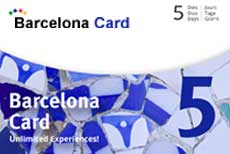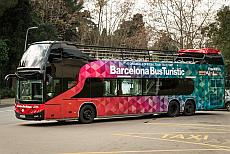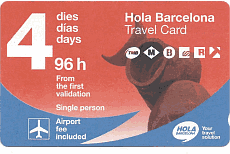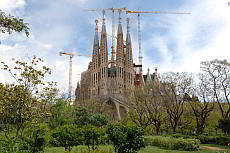Casa de les Punxes
The modernistic building reminds of the castle Neuschwanstein
The Casa de les Punxes breaks with all architectural conventions. This majestic mansion, designed by Josep Puig i Cadafalch, was built in 1905. It is reminiscent of Neuschwanstein Castle and a medieval castle.
It shows the influences of different architectural movements, countless technical innovations and a wealth of decorative elements of great artistic value.
History of the Casa de les Punxes
Bartomeu Terradas i Mont was born in Figueras in 1846 and was a well-known textile merchant in Barcelona. He became wealthy through a brisk overseas trade in textiles produced in Catalonia. As a result, his family belonged to the wealthy middle class of Barcelona. The family had four children in total: the three daughters Rosa, Josefa and Àngela and the son Bartomeu.
Architect Puig i Cadafalch
One of the most famous modernist architects, Josep Puig i Cadafalch, built the Casa de les Punxes.
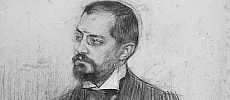
The Patriarch Terradas i Mont was always concerned about the welfare of his female family members, which was unusual at the time. After his death in 1901 he left a considerable amount of money, which was divided between his wife and four children. From these legacies, a building for the three daughters could be financed and built: the Casa de les Punxes.
In 1903 Bartomeu Terradas Brutau's son took over the project to build the house. He commissioned the architect friend, Josep Puig i Cadafalch, to draw up a first draft. The fairytale building was built between 1903 and 1905 according to plans by the modernist architect.
This spectacular building is one of Barcelona's signature buildings. At the same time, it is a key work for understanding the Catalan Art Nouveau movement.
In 1975 it was declared a historic monument.
It is currently privately owned and offers space for various offices and space for tours and events. After long restoration work, the Casa de les Punxes has been open to the public for the first time since 2016. After the Corona Panedmie it was not reopened.
The building
In contrast to the rest of the "Eixample" city plan, the building was planned on a triangular lot. This new design was inspired by the Northern European Otto Wagner movement: a block with six corners, coinciding with the intersection of the three surrounding streets, Avinguda Diagonal, Carrer Rosselló and Carrer Bruc.
The house has six towers that converge conically and end in needle-shaped peaks. Hence the name "Casa de les Punxes" - "House of Points or Needles".
Architect Puig i Cadafalch wanted the building to be considered structurally as a whole. Inside, however, the building should reflect the different characters of the three owners. For example, on the facade there is a plastic panel showing an angel. This figure points to the daughter of Àngela Terradas. Other decorative details reminiscent of the owners appear in the anagrams that wrap around the base of the tower like a border and feature the letters ATB, which refer to Àngela Terrada's Brutau.
Mainly brick was used for the construction of the facade. The brick is loosened up with colorful ceramic parts and natural stone sculptures. A selection of shamrocks also stands out in the stone carvings in this house strewn with floral decorations. There is a sundial and a calendar with Roman numerals, which simultaneously represent the four signs of the zodiac: Capricorn for winter, Aries for spring, Cancer for summer, Libra for autumn. At the top of the dial is written: "Numquam te crastina falls hora", which means "Everything in due time".
The story of Saint George is represented on another ceramic panel. You can see Georg or in Catalan Sant Jordi, who is about to kill the dragon. Beneath it is written in bold letters: "Santo Patrón de Cataluña devolvednos la libertad" - "Holy Patron of Catalonia, give us back our freedom".
In the facades of Avenida Diagonal and Calle Bruc we find two other ceramic panels. A vase full of roses, with the initials RTB and on the other side the figure of a girl surrounded by roses. This farm was for the sister Rosa Terradas Brutau. Other parts of the façade are decorated with male figures, some with horns, others with more specific physiognomies. Other elements such as the sailing knots, which serve to represent sea power, are clearly recognizable. As well as the recurring elements like apples, pomegranate, daisies, roses and shamrocks.
Casa de les Punxes co-working
Can you visit the Casa de les Punxes from? Unfortunately, no! Although the Casa de les Punxes opened to the public in 2016, it never reopened when the attractions were allowed to welcome visitors again after the pandemic. Will the building be open to the public again? We don't know, but current usage speaks against it.
Today there is a large coworking space with modern workplaces and infrastructure. You can rent a desk here by the day for €25, a social pass for €150 for a month at a table in the lobby, or a permanent place for €420 per month. The Casa de les Punxes also rents out rooms for events.
In the lobby there is ALLDAYCAFÉ, a restaurant and cafeteria that is also open to the public.
Useful for the Casa de les Punxes
(Click on the product images to view prices and availability)
- Bus Turístic: with the hop-on hop-off bus
- Barcelona Card: free public transport
- Sagrada Familia, just a few hundred meters away
Important information
Surroundings
Find Hotels nearby
Address
Avinguda Diagonal, 420
www.casalespunxes.com/en/
Arrival
Metro: Diagonal (L3, L5), Verdaguer (L4, L5)
Bus Turístic: Pg. de Gràcia - La Pedrera
Parking nearby
Opening times
The Casa de les Punxes can no longer be visited.
ALLDAYCAFÉ: Mon.-Fri. 09:00 to 18:00
Information on visiting the Casa de les Punxes
From the metro station Diagonal it is about a 15 minute walk to Casa de les Punxes.
The Sagrada Familia is only a few hundred meters away.
Book your accommodation in Barcelona here! All categories.
1-5*-hotel rooms, apartments, hostels.

